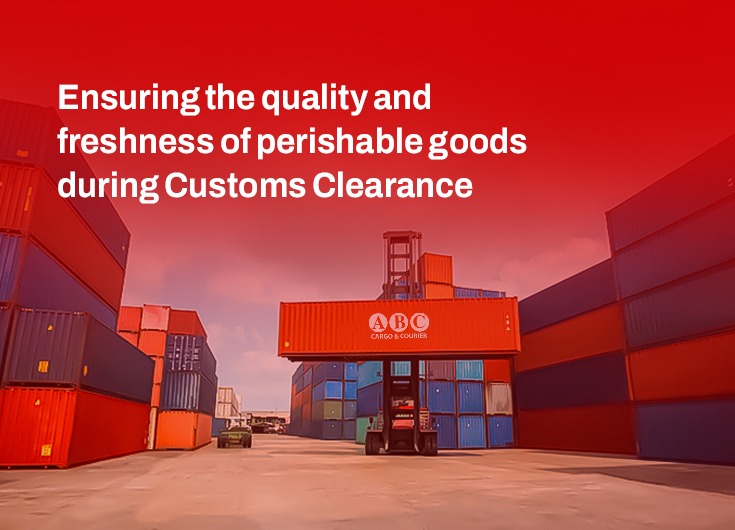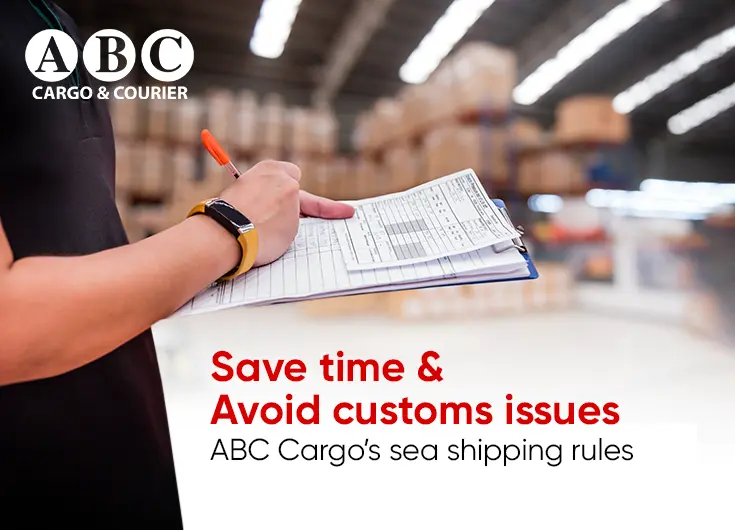In the global marketplace, the demand for perishable goods such as fresh produce, dairy, seafood, and meat continues to soar. These items must traverse international borders swiftly and efficiently to maintain their quality and freshness. However, the customs clearance process poses significant challenges that can impact the condition of these perishable goods. Ensuring that they remain in optimal condition requires meticulous planning, adherence to regulations, and the implementation of best practices in logistics. In this blog, we will explore the critical steps and strategies necessary to guarantee the integrity of perishable products as they navigate through customs, ultimately reaching consumers in peak condition.
Perishable Perfection: Maintaining Quality and Freshness Through Customs ClearanceThe international stage presents exciting opportunities and unique challenges for businesses dealing in perishable goods. One such hurdle is navigating customs clearance, where delays or improper handling can spell disaster for the delicate cargo. Ensuring the quality and freshness of perishable goods during this process requires meticulous planning and a multi-pronged approach. This blog delves into five crucial steps to navigate customs clearance for perishables with minimal risk and maximum freshness.
1. Pre-Clearance Preparations: Packaging and Handling
The journey to a smooth customs clearance starts well before the shipment reaches the border.
Here’s what you need to consider:
Packing Prowess: Invest in high-quality, temperature-controlled packaging. Opt for insulated containers with appropriate cooling or heating elements based on the specific needs of your perishables. Sturdy, crush-resistant materials are essential to protect your cargo from physical damage during handling.
Proper Labeling: Ensure clear and accurate labeling on all packages. This includes the product description, country of origin, net weight, and any special handling instructions, such as temperature requirements.
Documentation Done Right: Meticulous documentation is key. Prepare all necessary permits, phytosanitary certificates (for plant products), and health certificates (for animal products) well in advance. Familiarize yourself with customs regulations for both your origin and destination countries.
2. Customs Clearance Processes: Streamlining Efficiency
Once your shipment arrives at the customs checkpoint, minimizing delays is crucial. Here’s how to expedite the process:
Partner with a Customs Broker: Consider working with a customs broker experienced in handling perishables. Their expertise can navigate complex regulations and expedite clearance procedures.
Electronically Submit Documents: Use electronic data interchange (EDI) systems to submit documentation electronically. This reduces paperwork and speeds up the clearance process.
Prioritize Communication: Maintain open communication with customs officials. Provide them with clear and accurate information about your shipment and proactively address any potential concerns.
3. Monitoring and Tracking: Keeping a Close Eye
Real-time monitoring of your shipment provides peace of mind and allows for prompt intervention if necessary. Here are some ways to stay informed:
Temperature Monitoring Devices: Employ temperature logging devices within your packaging. These devices record temperature fluctuations throughout the journey, providing valuable data for customs officials and allowing you to identify potential issues.
GPS Tracking Systems: Use GPS tracking systems to monitor your shipment’s location and travel history. This allows for proactive communication with customs authorities and logistics partners.
4. Post-Clearance Handling: Maintaining the Momentum
Once cleared, the journey isn’t over. Here’s how to ensure your perishables reach their final destination in top condition:
Cold Chain Logistics: Maintain the cold chain throughout the entire journey. Partner with logistics providers specialising in cold chain transportation and have the infrastructure to ensure proper temperature control.
Quick Delivery: Prioritize swift delivery to your final destination. To minimize spoilage, minimize the time spent in warehouses or transit hubs.
Contingency Plans: Develop contingency plans for potential delays. Having a backup, cold storage facilities or alternative delivery routes can mitigate unforeseen circumstances.
Communication and Collaboration: Building Strong Partnerships
Communication and collaboration with all stakeholders are vital for success throughout the process. This includes:
Customs Authorities: Maintain open communication with customs officials, providing accurate information and promptly addressing concerns.
Logistics Providers: Choose reliable logistics partners experienced in handling perishables. Work collaboratively to ensure the cold chain is maintained, and delivery timelines are met.
Customer Communication: Keep your customers informed about the shipment’s progress. Transparency builds trust and allows them to plan for receiving the fresh produce.
Conclusion: A Delicate Balance, Achieved with Precision
By implementing these steps, businesses can navigate customs clearance for perishable goods with greater Efficiency and confidence. Remember, ensuring quality and freshness requires meticulous planning, proactive communication, and a commitment to collaboration throughout the entire supply chain. By prioritizing these aspects, you can ensure your delicate cargo reaches its destination in pristine condition, ready to delight your customers.
Additional Tips:
1. Invest in Training: It is advisable to provide comprehensive training to your staff regarding proper packing techniques, understanding documentation requirements, and adopting best practices for the management of perishable goods. This can ensure that your team is well-equipped to handle these products efficiently.
2. Stay Updated: It is crucial to stay abreast of regulatory changes. Regularly update your knowledge of customs regulations and international trade agreements to ensure that your operations comply with the latest requirements and standards.
3. Embrace Technology: Embracing technological solutions can significantly enhance the efficiency and transparency of your operations. Implement real-time temperature monitoring systems and utilize digital documentation to streamline processes and maintain the quality of perishable goods throughout the supply chain.
Many countries consider customs clearance for perishable goods to be their prime preference. Dubai Cargo, which mainly includes these perishable goods, usually gets easy clearance. Also, cargo to India containing perishable goods gets prime preference in the customs department when sent from Middle Eastern ports.





